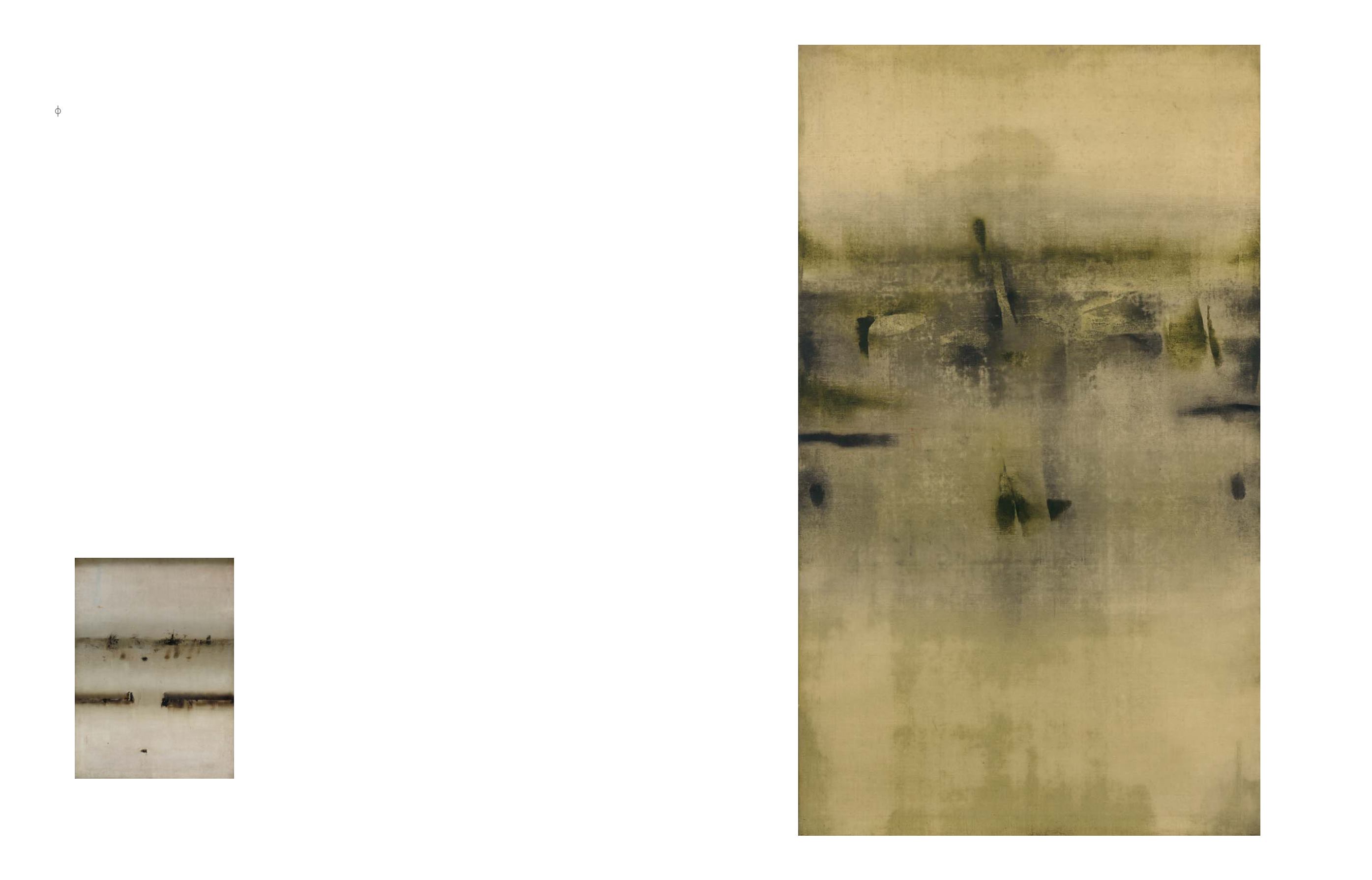

126
Saffronart | Evening Sale
In 1957, Gaitonde broke away from all forms of figuration,
choosing a “non-objective” mode of expression. According
to Menezes, he embarked on a journey “that would take him
from form to formlessness, from essaying an outward reality
to conducting a deep search within.” (Menezes, p. 98)This was
further augmented by his choice of monochromatic colour
palettes, which he achieved almost exclusively through the
use of rollers and palette knives, instead of brushes. “A turning
point in his life came after his encounter with Zen Buddhism
through the book
Zen in the Art of Archery
. His engagement
with Zen also gave him a deeper understanding of nature and
his early forays into the realm of abstraction were evocative
of both sea and landscape.” (Menezes, p. 27) He was also
inclined towards the philosophical and spiritual teachings of J
Krishnamurti and Ramana Maharshi.
In 1968, he made a radical shift from his early horizontal
canvases to a vertical format, which he retained through
the rest of his career. Sometimes these canvases looked
like ancient frescoes, punctuated by a horizontal band of
colour, suspended forms, in heavy impasto. Gaitonde was
awarded the Rockefeller Foundation Grant in 1964, which
took him to New York, where he encountered Mark Rothko,
one of America’s foremost Abstract Expressionists. This trip
furthered Gaitonde’s experimentation with abstraction.
Architect and friend of Gaitonde, Narendra Dengle writes,
“There was no background on which something was painted
but the entire work appeared like a dance of colours on
canvas.” (Narendra Dengle, “Gaitonde: The Spirit of his
Painting,”
Journal of Landscape Architecture, No. 44
, New
Delhi: LA, Journal of Landscape Architecture, June 2015, p. 99)
Following two years which yielded of a group of blue-green
vertical paintings, Gaitonde, in 1970 explored the subdued,
earthy colour palette seen in the present lot. Speaking of a
similar painting, Menezes writes: “...there is an ineffable quality
to the painting, a lyricism in the handling of colour and
light. Emotion and sensation in this work are conveyed by
a subtle and delicate use of paint. By using a roller, the paint
is spread finely across the surface, creating an ephemeral
effect. An economy of expression is conveyed by a restrained
and austere use of colour with its muddy and mossy tints,
while the consummate play of light and darkness creates a
harmonious whole.” (Menezes, p. 159) A delicate yet earthy
“dance on canvas” plays out with subtlety and lyricism in the
present lot.
PROPERTY FROM A PRIVATE INTERNATIONAL
COLLECTION
48
V S GAITONDE
(1924 ‒ 2001)
Untitled
Signed and dated in Devnagari and signed
and dated ‘GAITONDE / 70’ (on the reverse)
1970
Oil on canvas
60 x 34.75 in (152.1 x 88.3 cm)
Rs 10,00,00,000 ‒ 15,00,00,000
$ 1,515,160 ‒ 2,272,730
PROVENANCE:
Gallery Chanakya, New Delhi
Private Collection, Washington, DC, acquired
from the above in 1971
EXHIBITED:
V.S. Gaitonde ‒ 1971
, New Delhi: Gallery Chanakya
at Ashoka Art Gallery, 14‒23 February 1971
PUBLISHED:
Roshan Sahani and Narendra Dengle,
Vasudeo
Santu Gaitonde: Sonata of Light
, Mumbai:
Bodhana Arts and Research Foundation, 2016,
p. 402 (forthcoming, illustrated)
V S Gaitonde, Untitled , 1965 Saffronart, 10-11 December 2008, lot 76127


















